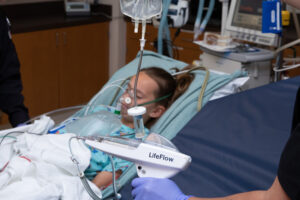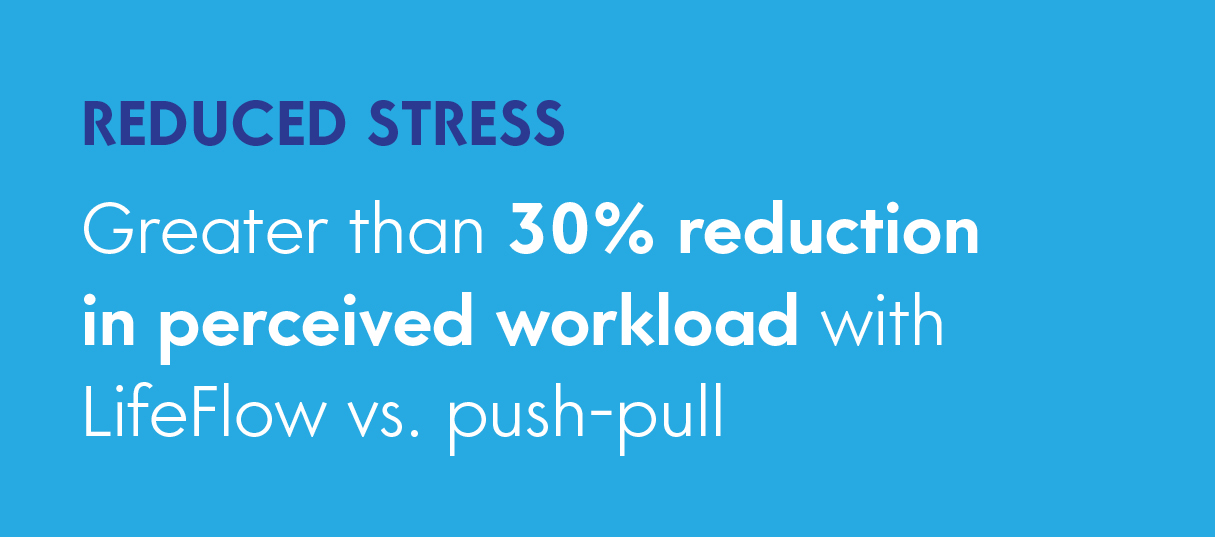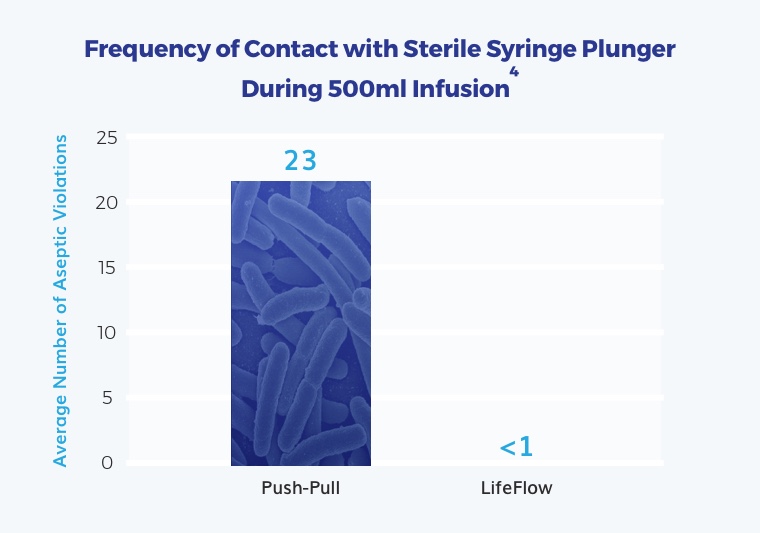Did You Know?
Each manual syringe stroke can introduce bacteria into the
syringe barrel.1,2,3
In children with decompensated shock from conditions such as hypovolemia, sepsis, hemorrhage, and anaphylaxis, rapid restoration of intravascular volume is required to correct hypotension and reverse shock. PALS guidelines specifically note that “early recognition and rapid intervention are critical to halting the progression from compensated shock to hypotensive shock to cardiopulmonary failure and cardiac arrest.”

Pediatric Readiness: The Fatal Consequences of Unpreparedness
National Pediatric Readiness Project Resources
– Maricar Cabral, RN IV, CCRN
Joe DiMaggio Children’s Hospital

 In a simulated pediatric fluid resuscitation study at Yale New Haven, LifeFlow was compared to push-pull and pressure bag.
In a simulated pediatric fluid resuscitation study at Yale New Haven, LifeFlow was compared to push-pull and pressure bag.
Each manual syringe stroke can introduce bacteria into the
syringe barrel.1,2,3
When using push-pull, providers often violate aseptic
technique – up to 23 times in one study.4
Syringes used multiple times on the same patient have been observed to have
a 26.5% contamination rate.5

Jan/Feb 2019, Vol. 42, Issue 1, p23
“Rapid fluid resuscitation is used to treat pediatric septic shock. However, achieving fluid delivery goals
while maintaining aseptic technique can be challenging. Two methods of fluid resuscitation—the commonly used
push-pull technique (PPT) and a new fluid infusion technique using the LifeFlow device (410 Medical, Inc;
Durham, NC)—were compared in a simulated patient model. PPT was associated with multiple aseptic technique
violations related to contamination of the syringe barrel. This study confirms the risk of PPT-associated
syringe contamination and suggests that this risk could be mitigated with the use of a protected syringe
system, such as LifeFlow.”
– RN in pediatric ED with first use of LifeFlow
Published Pediatric Case Series
Rethinking Pediatric Fluid Resuscitation White Paper